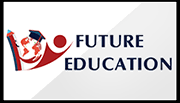CHALLENGES AND BARRIERS FOR IMPLEMENTING EDUCATION FOR SUSTAINABLE DEVELOPMENT (ESD) IN SECONDARY SCHOOLS IN SRI LANKA
DOI:
https://doi.org/10.17501/26307413.2018.1101Keywords:
Sustainable Development, Education for Sustainable Development, Secondary School, curriculumAbstract
This study was aimed to identify challenges and barriers to implement ESD in Secondary Schools in Sri Lanka. The samples were 36 Geography teachers from 36 1AB & 1C schools out of 54 schools. Samples were selected from the Kandy district and stratified random sampling method was used. Objectives were to identify challenges and barriers related to ESD in school curriculum, to investigate the challenges and barriers related to teachers in teaching ESD, to suggest ways and means to face the challenges and barriers. Data was collected by the survey method and the quantitative and qualitative data collected. Analysis was done descriptively. Challenges and barriers identified were; not including ESD as a core topic in the school curriculum, exam oriented mentality of students, lack of awareness of Sustainable Development (SD) and ESD concepts among teachers, lack of ESD programmes in the school time table, lack of funds, time and resource persons to carry out ESD programmes. The study recommended that curriculum enhancement and implementation of programmes to create awareness of SD and ESD with the concepts originated from the range of themes selected from the syllabi from Grade 6 to 13, a specialized SD and ESD teacher training, converting teachers to be change agents with a broad vision towards 17 SD Goals 2030 and identifying strengths and opportunities to implement ESD in the school programmes.
Downloads
References
Anyolo, Eveline Omagano .,2015,Implementing education for sustainable development in Namibian schools, University of Eastern Finland, URN:ISBN:978-952-61-1867-3
Chandith K. Prasanna.,2006, The Asia-Pacific Programme of Educational Innovation for Development (APEID) convened the 10th APEID International Conference "Learning Together for Tomorrow: Education for Sustainable Development" in Bangkok, Thailand, from 6 to 8 December 2006.
Country Report Sri Lanka., 2012,United Nations Conference on Sustainable Development
( Rio+20).Ministry of Environment, Battaramulla, Sri Lanka
Dieter, Gross.,2009,Barriers and Deficits with Implementing ESD. Results of a Survey., Berlin., Dieter.Gross@t-online.de.Feb.2009. www.desd.sustainfuture.org/int_jap_compilation_survey%20results_dg.pdf
Granados.J.,2011, Teaching Geography for a Sustainable World: A case study of a Secondary school in Spain. First published in Review of International Geographical Education Online : RIGEO 1(2):158-182.
Lee, J. C. K., 2000,Teacher receptivity to curriculum change in the implementation stage: The case of environmental education in Hong Kong. Journal of Curriculum Studies, 32(1),95–115
Summers, M., Childs, A., & Corney, G., 2005,Education for sustainable development in initial teacher training: Issues for interdisciplinary collaboration. Environmental Education Research, 11(5), 623–647
Wals, Arjen., 2009, Learning for Sustainable World, Review of Contexts and Structures for Education for Sustainable Development. UNESCO. France.
Westin, Martin., 2007,Implementing ESD-Means, Drivers and barriers in Drivers and Barriers for Implementing Learning for Sustainable Development in Pre-School through Upper Secondary and Teacher Education, UNESCO, 7 Place de Fontenoy, 75352, Paris 07, SP, France.
World Commission on Environment and Development Report., 1987, Our Common Future, UNSCO, Paris. www.un.org/esa/agenda21/natlinfo/countr/slanka/nsds.pdf
Downloads
Published
How to Cite
Issue
Section
License
Copyright (c) 2019 Author(s)

This work is licensed under a Creative Commons Attribution 4.0 International License.






